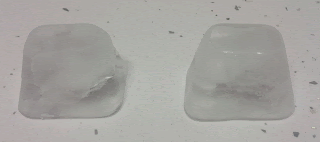Venus, by NASA or Ricardo Nunes - http://www.astrosurf.com/nunes/explor/explor_m10.htm, Public Domain, https://commons.wikimedia.org/w/index.php?curid=338424
Just before his death, in 1543, Nicolaus Copernicus published in his book On the Revolutions of the Celestial Spheres a Heliocentric model of the universe, that is, a model of the universe that placed the Sun rather than the Earth at the center of the universe. This is considered a major event in the history of science, triggering the Copernican Revolution and making an important contribution to the Scientific Revolution.
By Original image by Niko Lang
SVG version by User:Booyabazooka - Own work, CC BY-SA 2.5, https://commons.wikimedia.org/w/index.php?curid=5502912
According to Copernicus' model, since the Earth circulates the Sun in an orbit outside that of Venus and inside that of Mars, the apparent size of both Venus and Mars should change appreciably during the course of the year. This is because when the Earth is around the same side of the sun as one of those planets it is relatively close to it, whereas when it is on the opposite side of the sun to one of them it is relatively distant from it. When the matter is considered quantitatively, as it can be within Copernicus's own version of his theory, the effect is a sizeable one, with a predicted change in apparent diameter by a factor of about eight in the case of Mars and about six in the case of Venus.
On the other hand, according to the Ptolemaic system (the Geocentric model) Venus and Mars should not change appreciably during the course of the year because its epicyclical motion implies only a small change in distance from the Earth.
However, when the planets are
observed carefully with the naked eye, no change in size can
be detected for Venus, and Mars changes in size by no more
than a factor of two. This gives us strong evidence for the Geocentric model and refutes the Heliocentric model! How is this possible?
Please, explain your reasoning. You can post your attempted answers in the comment box below. Please, do not use Facebook or Twitter to give your answers.









